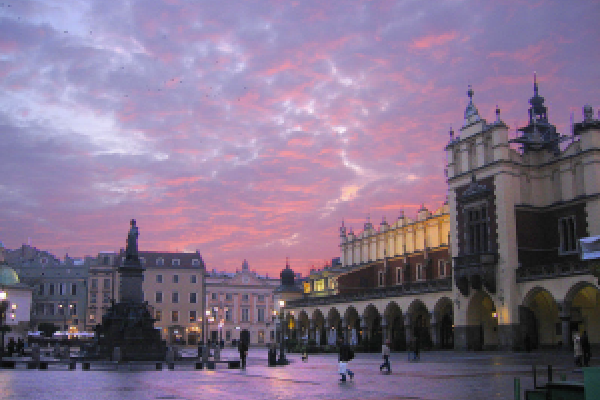
Learn Survival Polish
Wikitravel users have collectively created a free Polish phrasebook with the goal of making it possible for travelers to "get by" while traveling in areas where Polish is spoken.
Wikitravel phrasebooks are available in many languages and each one varies in depth and detail. Most of the phrasebooks include a pronunciation guide, a general phrase list, information about dates and numbers, a color list, transportation-related phrases, vocabulary for shopping and phrases for eating and drinking. Some are even more in depth, and all are free!
From Website
Polish is the official language of Poland, a country of 38.5 million people and is also used by the 10M Polish diaspora around the world. It is understood and can be used for communication in the western parts of Ukraine, Belarus and Lithuania. Polish is a Western Slavic language and the closest similar languages are those of Poland's neighbours: Czech, Slovak, Ukrainian. The latter two are actually more easily understood by a speaker of Polish, even though they have somewhat different interpretations of the Latin alphabet.
The language is unique in that it retains the nasal sounds lost in other Slavic languages and uses a unique diacritic mark, an ogonek (a "little tail") attached to a and e to express them. It is also noted for its consonant clusters with similar-sounding affricates and fricatives, some of which may cause some serious pronunciation difficulties. On the other hand, there are only 8 vowels in Polish, (a,e,i,o,u,y + nasals ą,ę) as compared to some 20 in RP English and the pronunciation follows a set of rules, so it can be read from the spelling of a word.
Like other Slavic languages, Polish is highly inflected allows much discretion in its word order. For example, Ania kocha Jacka, Jacka kocha Ania, Ania Jacka kocha, etc. all translate to Annie loves Jack, a sentence that cannot be further reordered without changing the meaning. This may cause some confusion for speakers of positional languages such as English. Polish has 7 cases, 3 grammatical genders (masculine, feminine and neuter) in singular and 2 (virile and non-virile) in plural. There are 3 tenses (past/present/future) and 18 verb conjugation patterns so as you can see the grammar may be a little challenging.
The Polish language has the following linguistic heritage: Indo-European Languages > Balto-Slavic Languages > Salvic Languages > West Slavic Languages > Lechitic Languages > Polish
Polish (język polski, polszczyzna) describes a Lechitic subgroup of West Slavic languages in Central Europe and the official language of Poland. Its written standard is the Polish alphabet which corresponds to the Latin alphabet with several additions. Polish-speakers use the language in a uniform manner throughout most of Poland.
Despite the pressure of non-Polish administrations in Poland, who have often attempted to suppress the Polish language, a rich literature has developed over the centuries and the language is currently the largest in terms of speakers of the West Slavic group. It is also the third most widely spoken Slavic language, after Russian and Ukrainian.
In the United States, Polish is spoken by small populations, particularly in the city of Chicago.